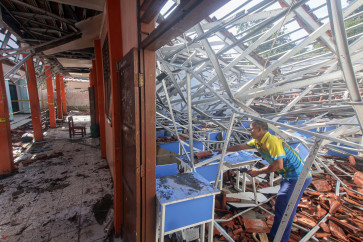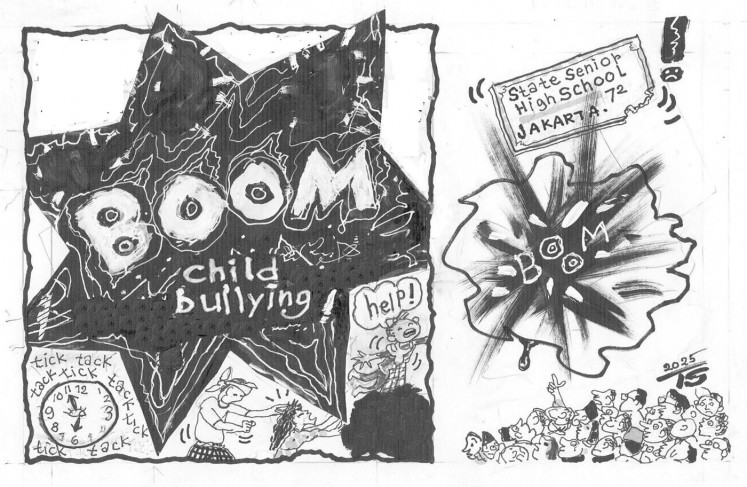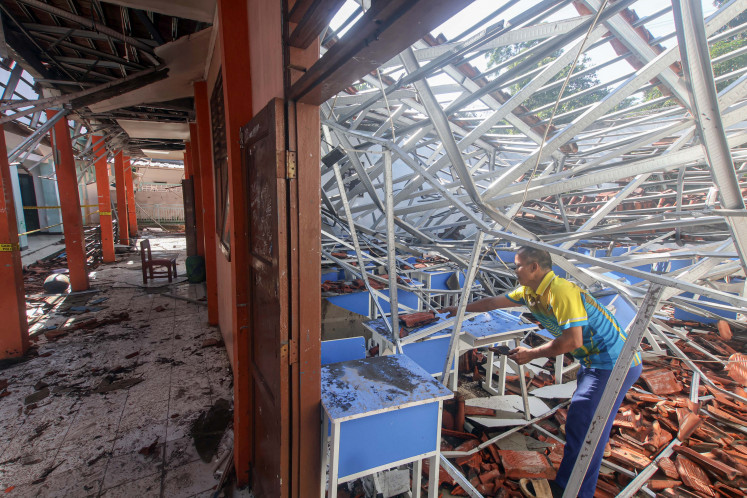Popular Reads
Top Results
Can't find what you're looking for?
View all search resultsPopular Reads
Top Results
Can't find what you're looking for?
View all search resultsBorobudur clean-up to finish in November
The restoration of Borobudur temple in Magelang, Central Java, following the eruption of nearby Mount Merapi last year will be finished by November, according to a UNESCO official
Change text size
Gift Premium Articles
to Anyone
T
he restoration of Borobudur temple in Magelang, Central Java, following the eruption of nearby Mount Merapi last year will be finished by November, according to a UNESCO official.
Hubert Gijzen from UNESCO’s Jakarta office made his comments on the sidelines of a visit to the world heritage site by Hollywood actor Richard Gere on Monday.
Much work was needed to clean the temple after it was covered in a layer of volcanic ash up to 3.5 centimeters thick during the volcano’s eruptions in October and November 2010, he said.
“With the rain that followed, the volcanic ash seeped into the cracks and the reliefs. The cleaning exercise is a titanic job, a very big job,” he said after accepting a Rp 250 million (US$29,000) donation from Coca-Cola Amatil Indonesia to support the project.
More than 55,000 stone blocks comprising the temple’s structure had to be dismantled to access the drainage system, which had been clogged by silt after the rains, according to Gijzen.
More than 100 international experts and officials from the Culture and Tourism Ministry have been working on the clean-up.
“Hopefully, we will meet again in November in this place to celebrate the completion of the restoration exercise,” Gijzen said.
He added that the donations received by UNESCO for the restoration were not enough to complete the project.
“We have estimated that the whole work will take close to $1 million in costs, including for equipment, workers and experts. So far we have a little less than a half,” he said.
“It is really a costly exercise. We’re still need a lot of support. We’re still expecting more contributions,” he added.
Separately, Borobudur Conservation Agency head Marsis Sutopo told The Jakarta Post that the cleanup was still under way.
The temple’s top three levels remain closed to the public due to the ongoing clean-up.
The stones on the upper three levels will be cleaned of volcanic ash and the destructive sulfur compounds contained in the ash neutralized.
The joints and cracks between the stones will be sealed to prevent rainwater from entering the temple’s infrastructure since the upper levels lack a drainage system.
“The sulfur has evaporated and neutralized but we are not yet sure about the long-term effects of the sulfur on the stones,” Marsis said, adding some stones were not cleaned and would be observed for research purposes.
The last restoration of Borobudur’s upper levels was completed by Theodor van Erp about 100 years ago, according to Marsis. “It’s now the time to do some [more] restoration.”
The temple’s lower levels would be cleaned its composite stone blocks disassembled to remove volcanic ash and sand in the temple’s drainage systems.
“We have done dismantling and clean-ups on the seventh level and will move further down to the other four levels directly below,” he said.










